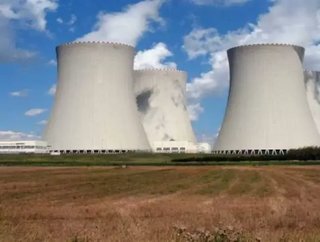China Launches Nuclear Safety Program

China's National Energy Administration (NEA) recently announced the launch of a series of R&D projects to improve the country's emergency response capabilities at nuclear power plants.
Taking into account the lessons learned from Fukushima, the projects will improve safety-related technology in the event of another extreme disaster. Some of those developments will include the development of passive emergency power supplies, cooling water systems and passive containment heat removal systems. The projects will analyze the impact of various events and response measures, comparable to earthquakes and external flooding. They will also take measures to prevent and mitigate the use of fuel accidents.
SEE OTHER TOP STORIES IN THE ENERGY DIGITAL CONTENT NETWORK
New Material Removes Nuclear Radioactive Waste
Experts Review Japan's Nuclear Reactors for Safety
February's issue of Energy Digital has gone live!
Some of the projects will cover beyond design basis accident mitigation systems, while others will focus on hydrogen control devices and emergency rescue robots. According to the NEA, these projects are expected to be completed by the end of next year and should drastically improve the safety of China's second-generation nuclear power plant technology.
Thirteen different projects will be carried out under the China National Nuclear Corporation , China Guangdong Nuclear Power Group, the Institute of Nuclear and New Energy Technology, as well as other domestic organizations involved in the construction and operation of nuclear power plants.
Projects listed below:
1. Development of passive emergency power supply and cooling water systems
2 Severe accident prevention and mitigation studies, and experimental verification
3, Seismic capacity and beyond design basis seismic margin analysis for CANDU plants
4. Research into beyond design basis (BDB) flooding and measures for mitigating spent fuel melting
5. Analysis of multiple simultaneous external events and response measures (for Qinshan and Daya Bay sites)
6. Beyond design basis accident mitigation equipment and systems R&D
7. Hydrogen control device R&D
8. Development of emergency rescue robots
9. Development of passive containment heat removal systems and the secondary side passive residual heat removal system
10. Radioactive contamination survey and measurement technology for major nuclear and radiation accidents
11. Radioactive effluent monitoring and radiation protection research in case of nuclear accident
12. Treatment of radioactive wastewater resulting from a nuclear accident
13. Nuclear accident, radionuclide-contaminated environment and emergency repair R&D
DOWNLOAD THE ENERGY DIGITAL IPAD APP






